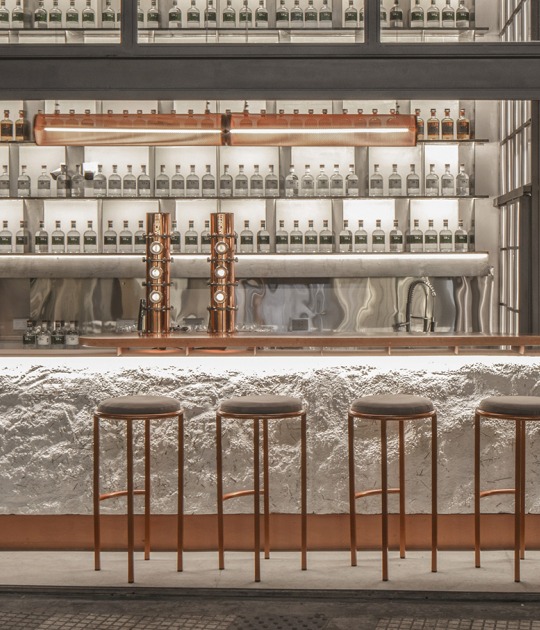The lobby becomes a garden landscape creating a lantern-like space floating above that allows soft light to filter in. At the same time, the ceilings here are lowered and suppressed to simultaneously frame views towards the blue seas beyond.
The rhythmic form between solid and void, the angled walls, and the expression of the textured material, contribute to building a dynamic façade activated by an interesting play of light and shadow. The hallways between the bedrooms become an urban landscape, an alley where people can walk and enjoy casual encounters.

Sanya Wellness Retreat by Neri & Hu. Photography by Chen Hao.
Project description by Neri&Hu
The Sanya Wellness Retreat is located in Haitang Bay on Hainan Island, a popular resort destination in China. Neri & Hu’s design is inspired by the ancient Chinese walled city, elevated on a heavy plinth, it is usually surrounded by water for protection. As such the hotel is defined by two parts, the wooden dwelling comprising guest rooms perches atop a masonry base that contains all the public spaces below.
Two L-shaped building volumes come together to form a water courtyard, the central feature from which all the hotel’s public amenities spread and emanate outwards. The lobby becomes a garden landscape with a floating lantern hovering above that allows a gentle light to filter in, and with the soft breeze that flows through, guests are immediately transported to a relaxed state of mind for appreciating the slow pace of island life. At the same time, the ceilings here are lowered and suppressed in order to simultaneously frame views outward to the azure seas beyond.

Sanya Wellness Retreat by Neri & Hu. Photography by Chen Hao.
At every given opportunity, the design tries to embody the genius loci of Hainan, to blend elements from the island’s collective memory, culture, and natural features. Tapping into local craftsmanship, the masonry walls that envelop the lower levels are clad with handmade clay bricks, while the fabrics and rugs are inspired by the textile arts of the Li minority tribe. The technique of soaking and pressing bamboo is also employed as a building material, with woven rattan and yellow bronze accents to enhance the layers of the project.
For the guest rooms, each unit is conceived as an individual wooden hut that contains functional amenities such as the washrooms. In the negative space between the wooden boxes lies the sleeping and relaxing zones, including the ocean-view balconies. The alternating rhythm between solid and void, the angled walls, and textured material expression, all contribute to a dynamic façade that is constantly playing with light and shadow. The corridor between the bedroom units becomes an urban streetscape, an alley where people can traverse and enjoy chance encounters, as such are the delights of being a traveler.



















































![10 architect studios led by women [X] 10 architect studios led by women [X]](/sites/default/files/styles/mopis_home_news_category_slider_desktop/public/lead-images/metalocus_arquitectas-2023_portada-2.jpg?h=3b4e7bc7&itok=YmfzpjfK)






